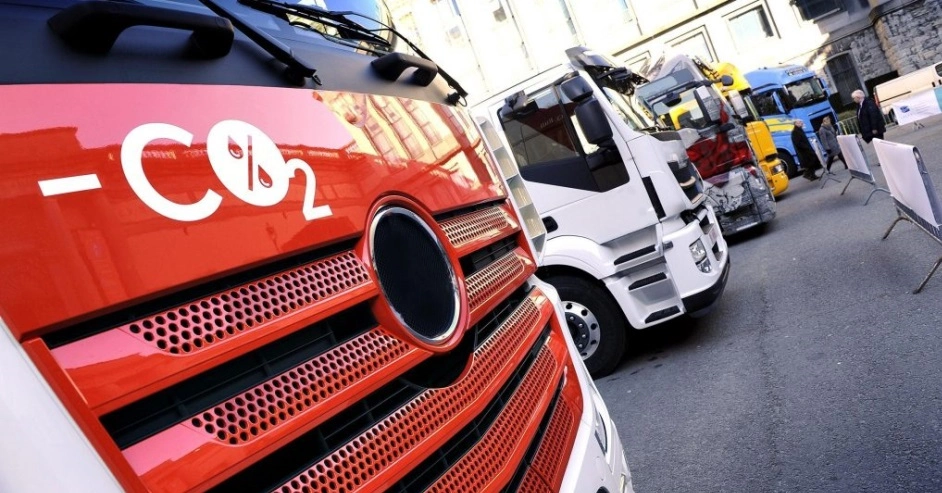Negotiators from the Council and the European Parliament reached a provisional political agreement yesterday on CO2 emission standards for heavy-duty vehicles (HDV).
The aim is to further reduce emissions in the road transport sector and introduce new targets for 2030, 2035, and 2040.
The new standards will contribute to achieving the European Union’s (EU) climate ambitions for 2030 and attaining climate neutrality by 2050.
The proposal also seeks to promote an increasing proportion of zero-emission vehicles (ZEVs) in the entire EU heavy-duty vehicle fleet while ensuring the preservation and enhancement of innovation and competitiveness in the sector.
The agreement is provisional pending formal adoption by both institutions.
The co-legislators agreed to broaden the scope of the regulation so that nearly all new heavy-duty vehicles with certified CO2 emissions (including smaller trucks, urban buses, coaches, and trailers) are subject to emission reduction targets.
Exemptions from the CO2 reduction targets set in the regulation will apply to small-volume manufacturers and vehicles used for mining, forestry, and agriculture; vehicles for military and firefighting use; and those for use in civil protection, public order, and healthcare.
The provisional agreement also extends the scope of the regulation to professional vehicles such as garbage trucks or concrete mixers at a later stage (2035).
Additionally, the Commission will explore the possibility of including smaller trucks (under five tonnes) in the scope of the regulation.
The provisional agreement also addresses the issue of modernized vehicles, i.e., conventional vehicles converted into ZEVs, allowing the transfer of such vehicles between manufacturers.
The co-legislators agreed to task the Commission with assessing, by 2025, the need to facilitate the market entry of modernized heavy-duty vehicles through harmonized standards for approval.
New emission reduction targets
In line with the EU’s climate targets for 2030 and beyond, the Council and the Parliament maintained the targets set by the Commission in its proposal for 2030 (45 per cent), 2035 (65 per cent), and 2040 (90 per cent), in addition to the 15 per cent reduction target for 2025 already outlined in the current regulation.
These targets will apply to heavy trucks over 7.5 tonnes and coaches.
The co-legislators agreed to set targets for trailers at 7.5 per cent and for semitrailers at 10 per cent.
They also introduced the definition of “e-trailers” to provide legal clarity and adapt existing regulations to technological advancements in this new trailer type.
Zero-emission target for urban buses
The proposed amendment introduces a 100 per cent zero-emission target for urban buses by 2035, while setting an interim target of 90 per cent for this category by 2030.
The co-legislators agreed to exempt intercity buses from this target and place them within the framework of overall targets for coaches.
Review clause
The Commission will review the effectiveness and impact of the amended regulation on the aforementioned targets in 2027.
Among other things, the Commission will also assess the possibility of developing a common methodology for evaluating and reporting the full life cycle CO2 emissions of new heavy-duty vehicles and conduct an evaluation of the role of a carbon correction factor (CCF) in transitioning to emission-free mobility in the heavy-duty vehicle sector.
The review will also evaluate the role of a methodology for registering heavy-duty vehicles running exclusively on CO2-neutral fuels.
Next steps
The provisional agreement will now be presented to representatives of the Member States in the Council (Coreper) and the Parliament’s Environment Committee for approval.
If approved, the text must be formally adopted by both institutions, following a review by linguistic lawyers, before it can be published in the Official Journal of the EU and come into effect.
Background
The heavy-duty vehicle (HDV) sector is responsible for over 25 per cent of greenhouse gas emissions from road transport in the EU.
CO2 emissions standards for certain HDVs were set for the first time in 2019, with targets for 2025 to 2029 and for 2030 onwards, with a provision that there would be a review of the regulation by 2022.
On 14 February 2023, the Commission submitted a proposal for a revision of the CO2 emissions standards for HDVs.
Although the proposal is not part of the ‘Fit for 55’ package, it is closely linked to it in that it contributes to the EU’s aim to reduce its net greenhouse gas emissions by at least 55 per cent by 2030 compared to 1990 levels, and to achieve climate neutrality in 2050.
The main proposed changes relate to the extension of the scope of the regulation to cover buses and trailers, the definition of ‘zero-emission vehicle’, and new EU-wide emission reduction targets for 2030, 2035 and 2040.
These targets do not apply to trailers and urban buses, which are subject to specific CO2 emission reduction requirements.
The Council and Parliament adopted their positions on the amended regulation in October and November 2023, respectively.







